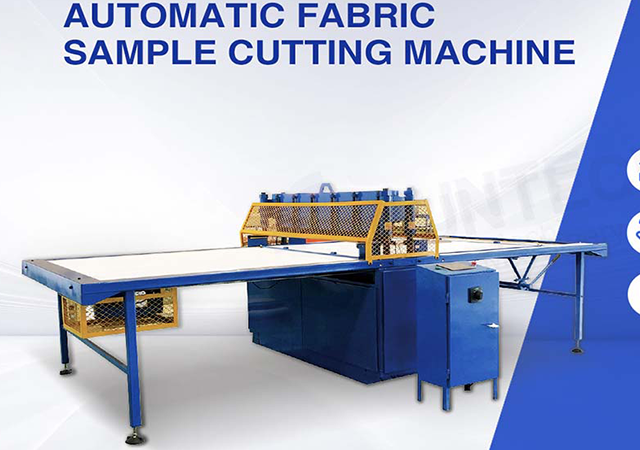Selecting the ideal fabric sample cutting machine is crucial for professionals in the garment industry. This article will delve into the key factors to consider when purchasing such a machine, offer insights into its operation, address common issues that may arise, and provide tips for achieving precise cuts consistently.
Factors to Consider When Purchasing a Fabric Sample Cutting Machine:
Fabric Types: Assess your needs and select a cutter capable of handling the variety of fabrics you work with.
Fabric Thickness: Opt for a cutter with sufficient power to handle thicker materials if needed.
Cut Sizes: Choose a fabric cutter that aligns with your requirements, whether for small, intricate cuts or larger pieces.
Budget: Evaluate your budget and find a cutter that strikes a balance between affordability and meeting your specific needs.
How to Operate a Fabric Sample Cutter:
Setup: Follow the manufacturer's instructions to set up the fabric sample cutter.
Positioning: Ensure the fabric is flat and free of wrinkles on the cutting surface.
Cutting Process: Lower the blade onto the fabric and move it along the cutting line slowly and carefully.
Cleanup: Lift the blade after cutting, remove any remnants, and repeat the process as necessary.
Common Problems with Fabric Sample Cutters:
Tangled Fabric: Address issues like incorrect blade tension, cutting angle, or damaged blades.
Uneven Cuts: Rectify problems related to blade tension, cutting angle, or damaged blades.
Rough Edges: Resolve issues with blade tension, cutting angle, or damaged blades for smoother edges.
Overheating: Avoid overheating by ensuring correct blade tension, cutting speed, and maintaining proper ventilation.
Tips for Achieving Successful Cuts Every Time:
Sharp Tools: Use a sharp knife or rotary cutter to prevent fraying and achieve cleaner cuts.
Slow and Deliberate Cutting: Avoid rushing to ensure even cuts and prevent accidents.
Specialized Cutting Surface: Use a cutting board or mat designed for fabric cutting to protect surfaces and enhance precision.
Test Cuts: Always test cuts on scrap fabric before working on the final garment piece to ensure accuracy.

Introducing SUNTECH Fabric Sample Cutting Machine ST-ASCM
ST-ASCM is equipped with a touch screen, it serves as the way by which When the machine is told how to cut through entering cutting width and length and the speed to the machine system by operating of the touch screen, then it will cut according to those settings automatically, with all the parameters can be customized by operators, for matching the particular requirements of the task.
The blades of the ST-ASCM fabric cutting machine are made out of Japanese alloy steel with a hardness range of HRC63-65. When maintained correctly, the blade has the potential to be utilized 200,000 times, which puts it in a far more advantageous position than one that is too long. The lifespan of a fabric cutting machine’s blade directly influence the cutting efficiency.
ST-ASCM has the 4 pieces of hand protection, with each of the light curtains. The sensor can detect any objects or hands in its path, then the machine will instantly come to an instantaneous halt. It avoid injuries that may have been inflicted by the fabric cutting machine, as well as damage to the blades that could have been caused by an unknown object being there.
SUNTECH fabric cutting machine has a cutting blade that is made of Japanese imported alloy steel with hardness 63-65, which has a longer lifespan than ordinary cloth cutting machines.
SUNTECH also provides suggestions to choose fabric edge slitting cutters, ultrasonic cutters/cold cutters/heat cutters as options, to guarantee the customer's use feeling.
Selecting a fabric sample cutting machine requires careful consideration of fabric types, thickness, cut sizes, and budget. Understanding the operation of the machine, addressing common issues, and following tips for successful cuts contribute to a seamless and efficient fabric cutting process. Take the time to compare different machines to make an informed purchase decision that aligns with your specific requirements.




